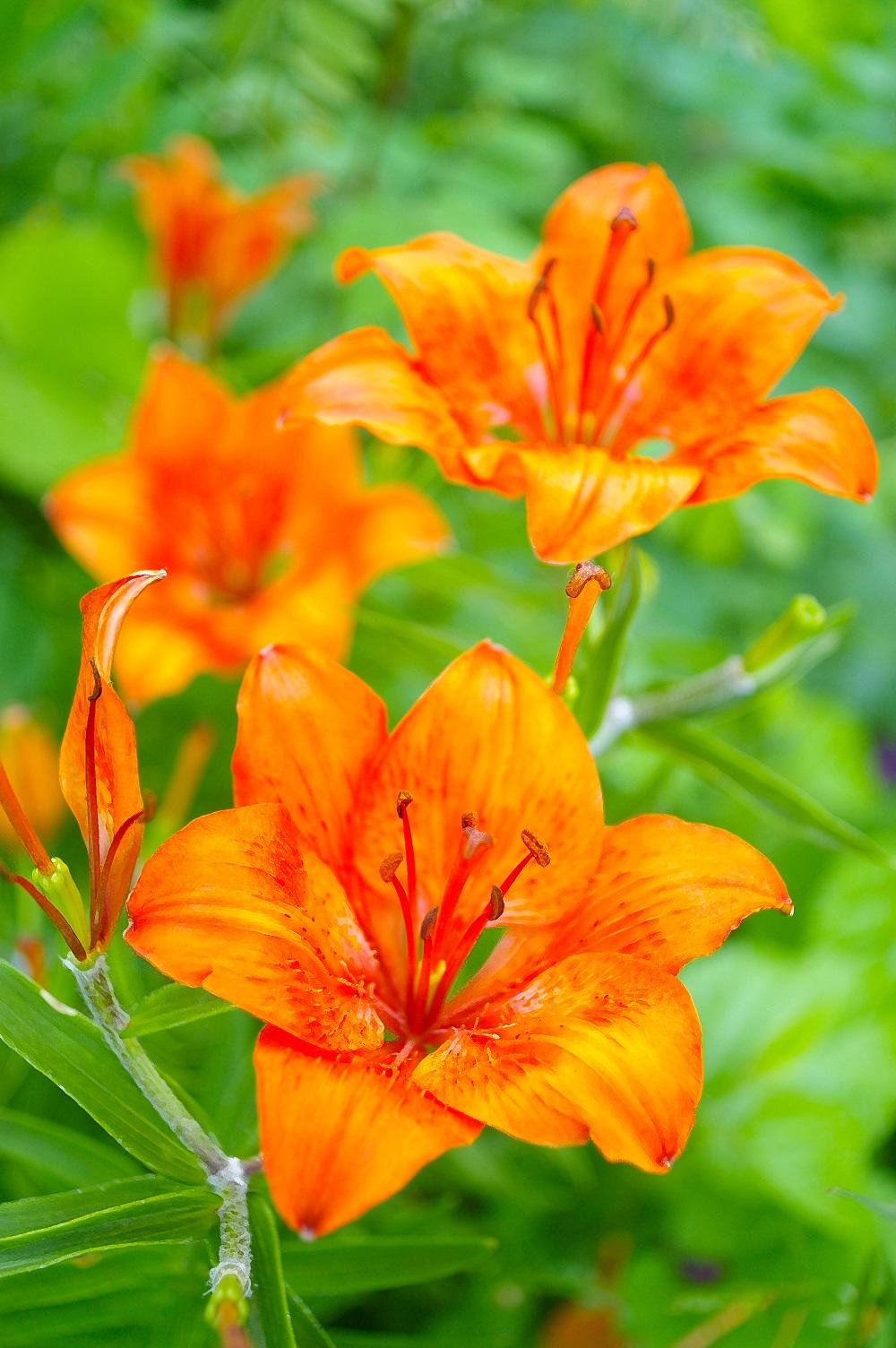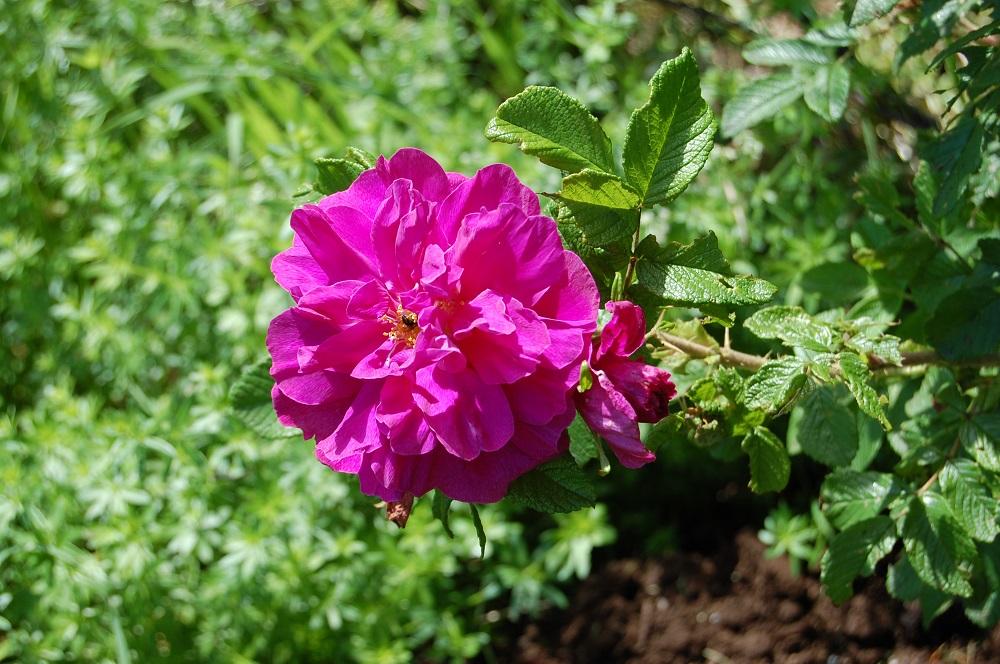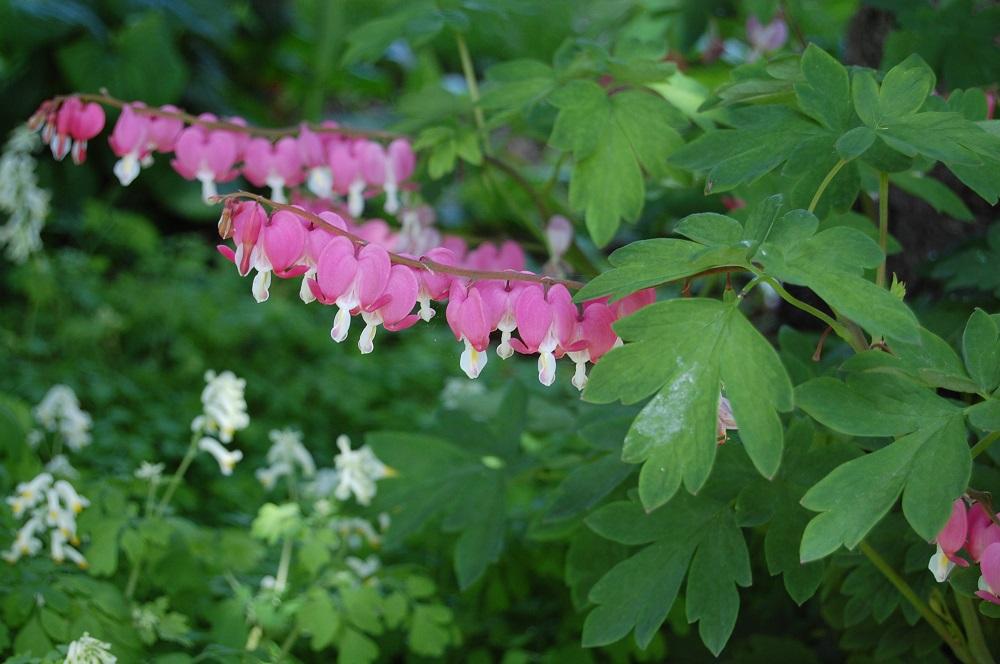Canadian gardens are fantastic. We are a creative lot, and every time we travel around our great country, we are reminded of this fact. Often, we see something that inspires, something that grabs our attention, and something that we need to try in our own garden. So, we whip out a phone or camera and snap a photo. Or we use a pen and paper and jot down a few notes. Reminders for later.
As we read The Landscapes of Anne of Green Gables by Catherine Reid, we created this list of plants for use in our Zone 5 gardens (coincidentally, while we live in Ontario and Green Gables is in Prince Edward Island, we garden in the same growing zone). The landscapes of P.E.I. served as inspiration for Lucy Maud Montgomery’s stories about Anne of Green Gables. We think they continue to inspire Canadian gardeners today.
We recommend a trip to Prince Edward Island any time during the gardening season. You will find horticultural inspiration there and, Mark adds, good golf courses too. If you are unable to get to the Island in person, we recommend picking up a copy of The Landscapes of Anne of Green Gables. And in the meantime, here are some of the best plants that we found in the book.
Soapwort (Saponaria officinalis)

Soapwort, also known as bouncing Bet, is mentioned many times in the Anne of Green Gables stories. However, it is an overly aggressive plant and is considered invasive when left unattended. Spreading through rhizomes, it can quickly become a problem. It is a perennial plant famous for its long-lasting pink blooms. Soapwort will flower throughout the summer and early fall; deadhead spent blooms to extend flowering. Soapwort is a butterfly magnet when grown in full sun. Plants will reach 60 cm (24 inches) in height and boast clusters of fragrant pink blooms. We strongly recommend growing soapwort in a container or raised garden, where you can control its spread. Hardy to Zone 3.
Orange Day Lily (Hemerocallis fulva)

Sometimes called ditch lilies, for good reason. They are low maintenance and very hardy. We often see naturalized areas of these lilies along roadsides and ditches. The metre-high plants produce orange flowers that last for 24 hours while the plant blooms mid-July through mid-August. Plant rhizomes in full sun or partial shade. Over time, the rhizomes will spread to naturalize the area.
Extremely easy to grow, orange day lilies tolerate a wide range of conditions. They are drought tolerant, rabbit resistant and salt tolerant. They are also considered aggressive; keep an eye on ditch lilies and dig out the rhizomes if they spread too far. Hardy to Zone 3.
Hollyhocks (Alcea rosea)

A short-lived biannual that returns each year by self-seeding. Traditional hollyhocks can reach a height of 2 metres (6 feet) and feature long, narrow panicles of tightly wound double flowers, like a delphinium but with a series of roselike blooms. We think that the blossoms of hollyhocks and Anne’s hat go together like cream and fresh strawberries. We like to plant in clusters and provide support with a large bamboo stake. Another option is to grow hollyhocks against a wall or trellis. Plant them in a sunny location and you will have blooms midsummer through early fall. Water the plants deeply during hot weather. Apply the water at soil level to avoid wetting the foliage. Hollyhocks are susceptible to rust disease if the foliage remains wet for long periods. Hardy to Zone 3.
Lupines (Lupinus polyphyllus)

An “easy-to-grow” perennial. Lupines are prolific on Prince Edward Island; indeed, the Maritimes seems to produce lupines without any effort. Visit at the right time of year, early June, and you will be amazed at the sight of them along roadways and in ditches. We think that lupines must love rocky, open soilless spaces, as that is where they appear to thrive. While they are classified as a perennial, they are short lived; usually a plant will die in its third or fourth year.
They grow in full sun to partial shade. Lupine seedlings do not like to be disturbed by transplanting, as they have a tap root. It is best to direct-sow them in the garden in early spring. After flowering, cut the stem back to ground level. If you are lucky enough to know a gardener with a mature lupine plant, it is possible to divide it in early spring. We have also had limited success with the plants self-seeding to return the next year. While we may struggle to grow lupines in our gardens, the provincial government in P.E.I. considers the plant a weed and lists it as invasive. Hardy to Zone 2.
Rugosa Rose (Rosa rugosa)

The first thing we noticed about rugosa roses is the fragrance. Walk by a cluster of these bushes in bloom on a sunny day and you will be amazed by the scent. The foliage provides a great show even when the plant is not in bloom: The leaves are bright green with a thick texture. Rugosa roses are drought tolerant and do not mind poor soil conditions. They are resistant to most rose bush diseases, including black spot and mildew. You can extend the bloom period by removing the spent blooms with a sharp pair of pruners. If, however, you allow the spent blooms to remain on the plant, you will be rewarded with large, attractive rosehips that are rich in vitamin C. The birds in your yard will feed on these hips in the fall and winter. The multiple thorns on the rugosa rose make these plants suitable for a security hedge, but they’re a nuisance to prune without heavy gloves. Hardy to Zone 3.
Bleeding Heart (Lamprocapnos spectabilis)

Let us first start by acknowledging the name change. We have always known bleeding heart as Dicentra spectabilis. And this was certainly the accepted name back when Lucy Maud Montgomery wrote her beloved stories about Anne Shirley. However, in the past decade, plant taxonomists changed the name. So, if you hear some of us refer to Dicentra, please forgive us.
Bleeding heart prefers a location in part shade. It must be protected from direct sunshine during the heat of the day. It is one of the first perennials to bloom in the spring garden. Flower stems produce a row of pink blooms, each resembling a small broken heart. The fernlike foliage and delicate flowers help this plant stand out in the spring garden. Hardy to Zone 2.
Garden Phlox (Phlox paniculata)

This is one of our top 10 hummingbird plant picks. Plant in full sun or partial shade. The fragrant bursts of pink, purple and white blooms of garden phlox will not disappoint. It grows to a height of 1.2 metres (4 feet) and blooms mid-to late summer. Add a 2.5 cm (1 inch) layer of mulch around the plants each spring to retain moisture in the soil. Powdery mildew is a challenge with phlox; to slow it down, we apply garden sulphur once every 2 to 3 weeks. Leave at least 50 cm (20 inches) between plants to improve air circulation. Water at soil level to avoid wetting the foliage. Cut back the stems after flowering, to encourage re-flowering and to reduce the risk of powdery mildew. Hardy to Zone 4.

Willow Tree (Salix babylonica)

These are large, graceful trees that require space to grow. Mark says that the weeping willow is a great tree for a neighbour to plant, very far away from our own landscape and home. We do not recommend planting a weeping willow if you live in a subdivision since they can reach 40 feet in height and their roots can cause problems to a house foundation, weeping tile bed or anywhere there is a source of water, as their roots migrate toward it.
However, if you have the space, weeping willows are glorious. They prefer moist locations and are often found near ponds and streams. Cuttings root easily in water. If you start your own willow tree from a cutting, it will quickly grow into a specimen. Willows are known to grow up to a metre per year. Hardy to Zone 5.
Mark Cullen is an expert gardener, author, broadcaster and tree advocate
and holds the Order of Canada. His son, Ben, is a fourth-generation
urban gardener and a graduate of the University of Guelph and Dalhousie
University in Halifax. Follow them at markcullen.com, @MarkCullen4
(Twitter) and @markcullengardening (Facebook) and look for their latest book, Escape to Reality.
Follow them at markcullen.com, @MarkCullen4, facebook.com/markcullengardening and biweekly on Global TV’s national morning show, The Morning Show.














